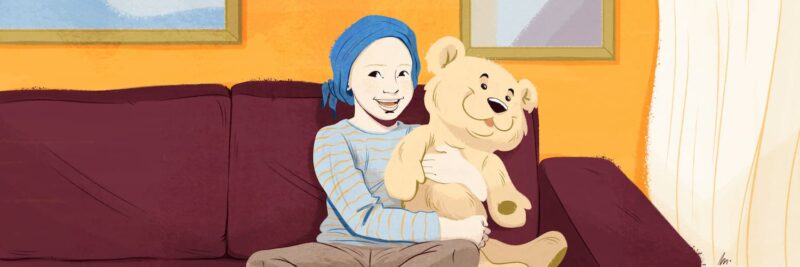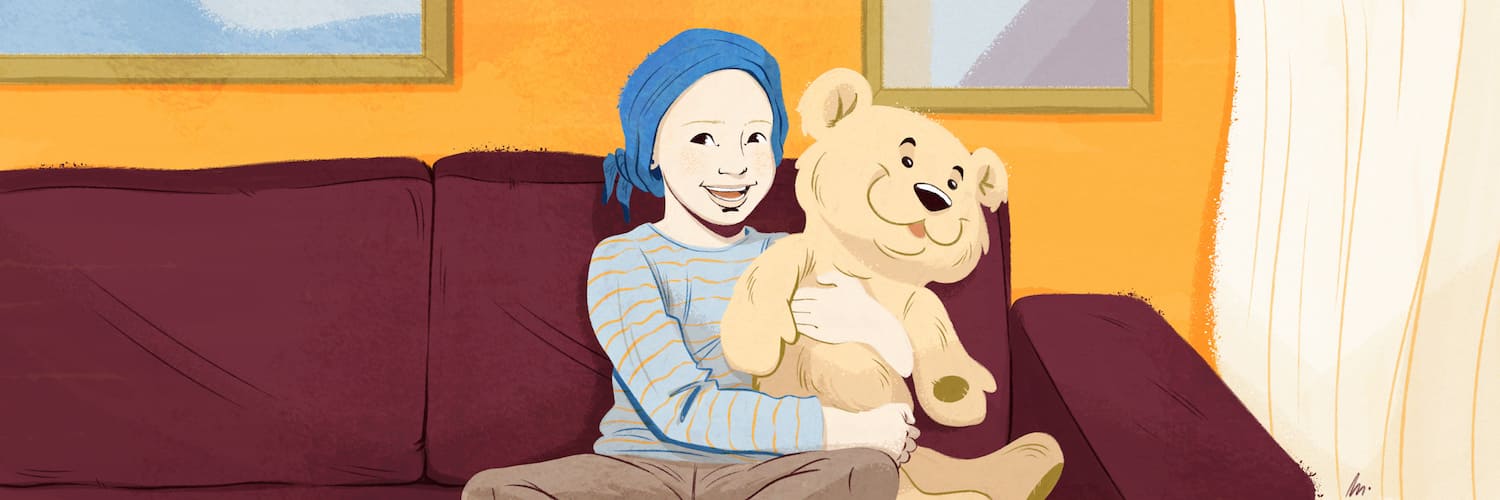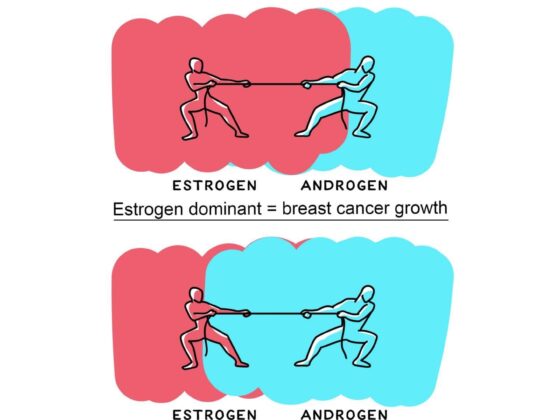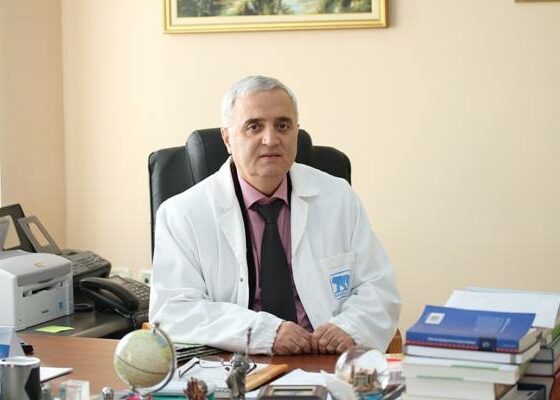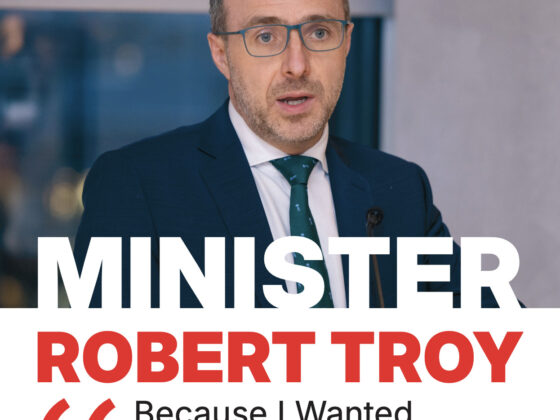More than eight in ten children and young adults diagnosed with cancer now survive their disease, often going on to live long and fulfilling lives. But the serious life-long damage that is inflicted by many treatments is still a bit of a taboo subject. Sophie Fessl hears from parents and survivors who want to see more openness and higher priority given to ensuring all survivors get the support they need.
Daily epileptic seizures, little possibility of living independently, heavy reliance on family support to get through school and receive therapy, an uncertain future on the job market: for Emma Becker’s son*, the brain tumour he was treated for when he was six years old has consequences that will last his entire life. “Our son does not need care, but we can never leave him alone. He will never gain the independence his contemporaries have,” says his mother. “As parents, we had to create the support for our child. And how well you can deal with this challenge depends on the environment, your own support structure, and your finances.”
With a cure rate of around 85%, childhood cancer is understandably seen as the posterchild for progress in oncology. But this success sometimes comes at a high price. A 2020 study found that, by 45 years of age, more than 55% of survivors of childhood cancers had health conditions considered severe and disabling, life-threatening, or fatal (grade 3–5). Those figures relate to children diagnosed in the US and Canada between 1970 and 1999, and are likely to have improved for some cancers treated more recently. The trade-off between cure and the damage to health was highlighted in separate study, published the same year and looking at the same historical period, which compared the mortality profiles of childhood cancer survivors who were treated in the US/Canada with their counterparts treated in the UK. While those diagnosed with a childhood cancer in North America were less likely to have died from recurrence or progression, at 40 years from diagnosis they were twice as likely as their surviving UK counterparts to have died from subsequent cancers, cardiac and respiratory diseases, and other health-related factors. The authors concluded that “US survivors may have received more intensive regimens to achieve sustainable remission and cure, but the cost of this approach was a higher risk of death from late effects.”
In human terms, the cost is represented not just by the mortality from late effects, but the toll on survivors’ quality of life arising from the chronic conditions – cardiovascular, respiratory, neurological, musculo-skeletal ‒ that lie behind those early deaths. The cost is also borne by families who often struggle to get the help they need to enable their son or daughter to live life as fully as they can.
As Emma Becker points out, even in Austria, which has relatively high levels of health and social care, her son relies almost entirely on his family to provide the support he needs. “We had and still have support, from our family, friends and the Austrian Childhood Cancer Organisation. But what would the situation be like without support from all sides?” The family was also able to pay for additional therapies, including music therapy, ergotherapy and, tutoring. And while all families would want to provide the same level of support for their children, not all have the capacity or resources to do so.
While as a society we have become increasingly open about discussing cancer and the many ways it affects our lives, the long term impact of some therapies for childhood cancers is still a taboo topic, according to some survivors. Many feel that the overwhelming pressure felt on the front line of paediatric oncology to save the life of every child can overshadow an equally important need to minimise the damage done to the quality of those lives. It is perhaps noteworthy that while children being treated for cancer frequently feature in campaigns to raise money for cancer research, the emphasis tends to be on finding new treatments that can push up the cure rate beyond the current 85%, rather than finding treatments that can do less damage to the 85% who are cured.
Balancing priorities
A Manifesto for Childhood Cancer launched in advance of the 2019 European elections has been seen as an important step towards pushing the needs of survivors up the professional and political agenda. Developed jointly by European paediatric oncologists and parents and survivors groups, under the heading ‘cure more and cure better’ it calls for a goal of ‘zero deaths and zero late-effects’.
The document, published by the European sections of the International Society of Paediatric Oncologists (SIOPE) and Childhood Cancers International (CCI) Europe, outlines recommendations for MEPs to tackle childhood cancer, including more resources for childhood cancer research and enabling the legislative environment to develop new drugs more quickly.
Pamela Kearns, Professor of Clinical Paediatric Oncology at the University of Birmingham and President of SIOPE, says it would be wrong to aim any lower than a 100% cure rate. “When a family asks you, ’Can you cure my child?’ At the moment, you have to answer, ‘I’m going to try.’ Wouldn’t it be fantastic if we could get to a stage where the answer to that question is a simple ‘Yes’? But there should be no long-term effects that impact on the child’s ability to lead the life they want to lead when they grow up.”
Anita Kienesberger, who chairs the European committee of the CCI ‒ a patient support organisation that includes parents’ and survivors’ groups ‒ wants to put the emphasis on long-term impacts. “The demand that no child should die from cancer is a given, all parents want their child to live. But this doesn’t mean that we should aim for this at any price,” she says. “Such a demand needs discourse… As it is, this demand reminds me of competitive sports: The goal should be reached, but the prize, the quality of life, is not considered important.” Wanting every child to survive is one thing, she says, but the quality of survival has to be taken into account.
A difficult discussion
Jaap den Hartogh and Carina Schneider are very concerned with quality of life. They both survived childhood cancers and are now active within CCI Europe. “We know survivors who experience days where they wish they wouldn’t be here anymore,” says Schneider. “It is a tricky balance that we live with in our daily lives. In many cases, it also depends on the support system around you: Do you have a family who cares? Do you have friends who care and understand? In your job, in your society – do they accept you with your late effects and your issues around quality of life?”
“It is a tricky balance that we live with in our daily lives. In many cases, it also depends on the support system around you”
Ultimately, the discussion surrounding zero deaths and zero late effects boils down to one issue, says Schneider. “Who can judge what kind of life is worth living? And what kind of life is not worth living?” And den Hartogh adds, “Every life is worth living. But sometimes, there are things that make living life difficult…” He emphasises the difference between being cured of cancer, and ‘positive health’. “Health is much broader than the absence of disease. We hope that there will be more attention to the quality of life of survivors, also in terms of mental health and psychosocial wellbeing.”
“Should we keep treating children for this or that price or should we not – that’s not a nice discussion to have,” says Carina. “It’s a taboo. But I think there should not only be a focus on childhood cancer, because children also die from other diseases. I think that we live in a society where we lost a little the connection to death and dying.”
It’s important be realistic
It’s important to be open and honest about what is currently possible, says Agathe Schwarzinger, a psychologist at the Medical University of Vienna, who leads psychosocial after-care projects run by the Austrian Childhood Cancer Organisation. “Of course, the patient’s well-being is at the core. But when we discuss a 100% cure rate, we also need to look at what this means for everyone connected with the patient”, she says. “The wish to achieve a 100% cure rate is natural and understandable. But the question is, how realistic is it? Which burdens will the patient and also the family have to carry, and under what circumstances? The burdens, but also the circumstances and possibilities will vary from individual to individual, as well as from family to family.”
Children and their families should receive psychological support from the start of diagnosis, she says. Once a relationship is established with the family, psychologists can also accompany them through very sensitive phases, such as when the cancer returns or progresses. “Shared decision making is the optimum. At the junction between curative and palliative treatment, we need to also consider what the individual child or adolescent can carry, what it means for the family. As healthcare professionals, we need to listen to the patient and their family to find out what they need, what they think and wish for.”
Schneider and den Hartogh know as well as anyone how hard conversations about long-term effects can be. “We once made a wordplay about ‘scare, share and care’. So it’s scary, but you should share in order to care. Although it’s a difficult topic it should be shared, it should be discussed, to get good care and to make the right decisions.”
“We once made a wordplay about ‘scare, share and care’. So it’s scary, but you should share in order to care”
Schneider stresses the huge value of involving psychologists in these discussions, but points out that, at least in Austria, most psychosocial positions are still financed by parent organisations, rather than the healthcare system, “which indicates that when it comes to costs, psychosocial care is not seen as the high priority it should be.”
Cure more, cure better
Funding much more research to push up cure rates while minimising long-term damage is something everyone agrees on. Gathering high-quality data on long term effects, and running trials to understand more about efficacy‒toxicity trade-offs using different protocols will be key.
Kearns mentions a trial carried out by the SIOP Renal Tumours Study Group, which tested whether doxorubicin – a chemotherapy drug that can inflict long-term damage on heart health – could be omitted from the treatment of some children with Wilms’ tumour. “Because of this trial, we can spare a whole cohort of children the risk of having heart toxicity,” she says.
Progress has also been made in safeguarding fertility in children and adolescents treated for Hodgkin lymphoma. A trial randomising between the standard of care and an experimental protocol using drugs less toxic to fertility was halted early when the results showed clearly that the less toxic regimen achieved an equivalent survival rate, says Kearns.
Kearns believes that the childhood cancer survivorship passport (SurPass), offers important opportunities for generating evidence on long term effects. The passport is a standardised electronic record that was developed to improve the care of childhood cancer survivors as they grow up and lose the ties with their original treatment centre. It carries details about the diagnosis and clinical course of the disease, as well as details about the treatment, along with information about raised risks for different types of late effects, how and when to monitor for these and what action to take if problems arise. But it could also be an important source of information about the incidence and nature of long term effects associated with different treatment regimens, which tend to be poorly tracked.
“In this context, we should monitor and collect data about long-term effects of treatment in a systematic way, also for newer drugs coming onto the market,” says Kearns. Or, as Jaap den Hartogh puts it, “make use of the late effects we have, so that the medication children receive now can be improved.”
Kienesberger would love to see more systematic gathering of data on long-term effects, but she says more work is needed to develop better ways to capture what really matters to survivors. Patient-reported outcomes are essential she argues, but she says they are currently underdeveloped in paediatric oncology.
“Currently research in this field has a strong focus on physical late effects. But we can give feedback on what we think are important issues”
Schneider agrees that the assessments used to judge quality of life frequently focus on medical issues or ask questions that are sometimes not the most relevant in terms of the everyday life of survivors like her. “There are things more relevant that are often not taken into account, including psychosocial aspects,” she says. She and den Hartogh would both like to see more attention paid to assessing and documenting the quality of life and mental health of survivors. “Currently, research in this field has a strong focus on physical late effects. But we can give feedback on what we think are important issues, such as receiving good care and assuring a good quality of life.”
The best care for every child
The top priority for CCI Europe is for children and adolescents with cancer to benefit from the best possible treatment, care and support, anywhere in the world. “If we want to cure 100%, we need to cure better,” says Schneider. “But the point is as long as we are not there with having zero late effects, we need to create an environment which provides the best possible support for survivors.”
She points to large variations in the support available across Europe and even within each country. “In southern and eastern Europe, some clinics do not provide follow-up care. Doctors already have scarce resources to treat patients who suffer from cancer now, let alone for taking care of survivors,” she says, but adds that “even in Austria, at some sites, we have only been able to firmly establish long-term follow-up care this year… So it doesn’t necessarily depend on whether it’s a low-income or high-income country.”
She advocates for a more open approach towards late effects, in which it is accepted that they are a reality and are addressed as such. “If we start having this discussion more openly, also in our community [of parents and survivors], we have to make clear that we will still try to do everything we can to save every life we can. But having this discussion more openly might help to strengthen the support systems, also for those who have to suffer a lower quality of life as a consequence of their disease and treatments.”
Emma Becker sees every day how important adequate support is to maintaining the quality of life for survivors who struggle with long term effects. She agrees on the need to focus on how society can better care for and support survivors. “The children, later adults, not only have a right to survival, but should at some point again be able to participate in all areas of life, including gainful employment, social life, and more. I would like to see more awareness and acceptance of late effects, to make life after cancer easier.”
*Name has been changed for privacy
Illustration by: Maddalena Carrai

